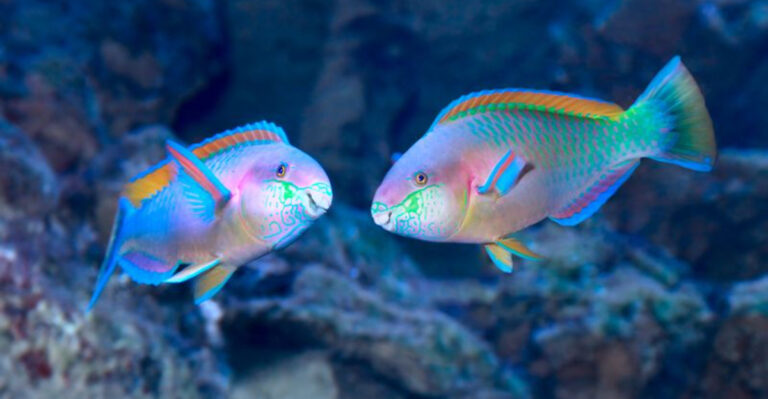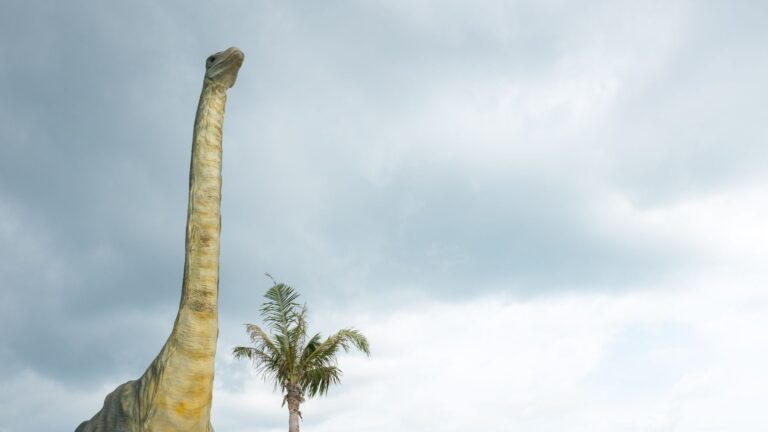14 Facts About America’s Most Lethal Snakes

Slithering through our forests, deserts, and swamps are some of nature’s most efficient predators – venomous snakes.
The United States is home to several species that can deliver potentially fatal bites. Understanding these remarkable reptiles helps us appreciate them from a safe distance and know what to do if we encounter one in the wild.
1. Eastern Diamondback Rattlesnake Is The Largest Venomous Snake In North America

Growing up to 8 feet long, these massive pit vipers deliver enough venom in a single bite to kill five adults. Their distinctive diamond pattern serves as a natural warning sign.
They primarily inhabit the southeastern coastal plains, preferring pine forests and palmetto thickets where they hunt small mammals and birds.
2. Western Diamondback Rattlesnake Can Strike From A Distance And Deliver A Powerful Bite

Famous for its lightning-fast strike, this desert dweller can launch nearly half its body length forward in milliseconds. The venom causes tissue death and internal bleeding.
Found across the southwestern states, these rattlers have adapted to survive in harsh environments where water is scarce and temperatures soar above 100°F.
3. Copperhead’s Camouflage Makes It One Of The Most Commonly Encountered Venomous Snakes
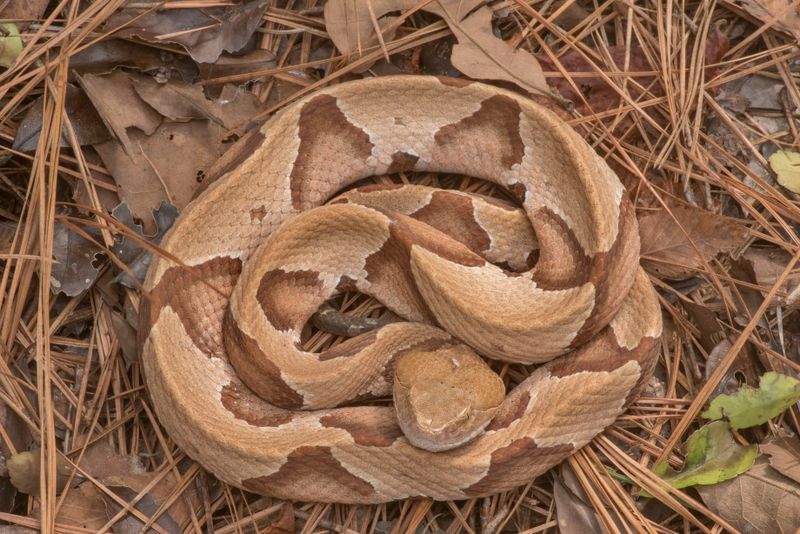
Masters of disguise, copperheads blend perfectly with fallen leaves on forest floors. Their copper-colored hourglass bands disappear against autumn foliage, making them nearly invisible to hikers.
While their venom is less potent than other pit vipers, they cause more bites annually simply because people don’t see them until it’s too late.
4. Timber Rattlesnake Can Live For Over 20 Years And Is Known For Its Powerful Venom
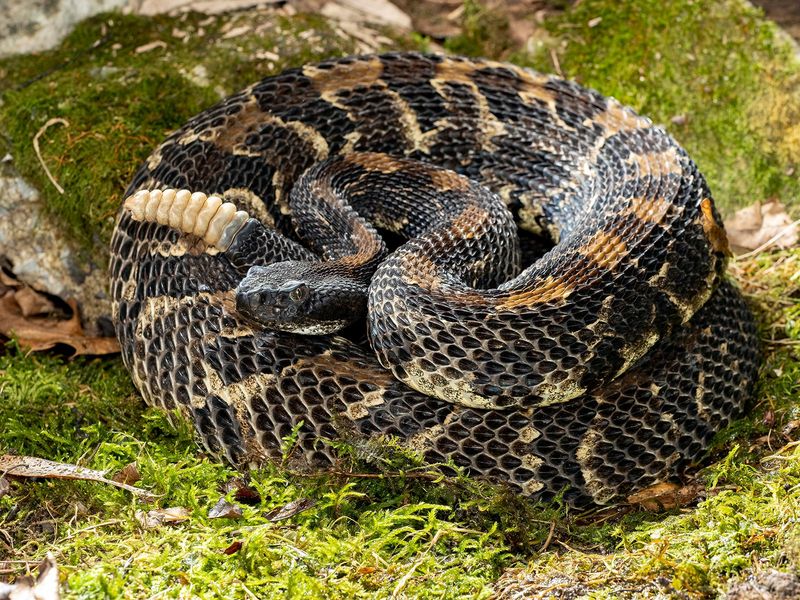
With a lifespan rivaling many household pets, these woodland rattlers develop increasingly potent venom as they age. Their bite contains a complex cocktail of toxins that attack multiple body systems simultaneously.
Historical records show timber rattlesnakes were so feared by early American colonists that some towns offered bounties for dead specimens.
5. Cottonmouth (Water Moccasin) Won’t Hesitate To Defend Itself When Threatened
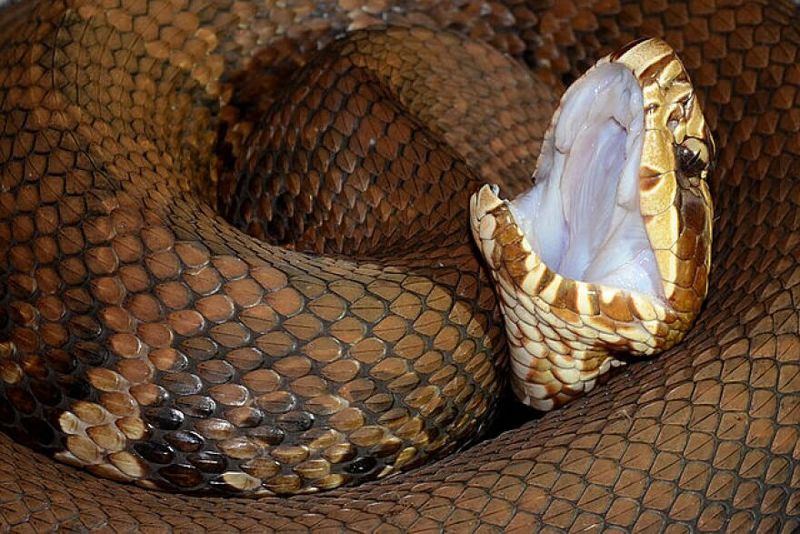
Unlike many snakes that prefer to flee, cottonmouths often stand their ground when confronted. They display their namesake white mouth lining as a warning before striking.
Semi-aquatic predators, they hunt along waterways throughout the southeastern states, swimming with their heads held above water like periscopes, searching for fish and frogs.
6. Black Mamba Can Reach Speeds Of 12 Miles Per Hour, Making It One Of The Fastest Snakes
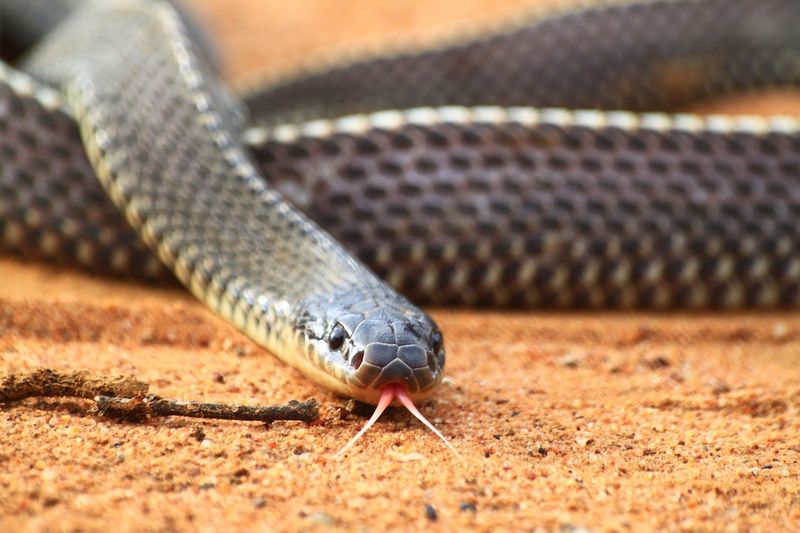
Though not native to North America, this African serpent deserves mention for its terrifying combination of speed, aggression, and lethal venom. Black mambas can outpace a running human over short distances.
Their neurotoxic venom can kill within 20 minutes if untreated, making them among the most feared snakes worldwide.
7. Coral Snake’s Bright Colors Are A Warning For Its Deadly Neurotoxic Venom
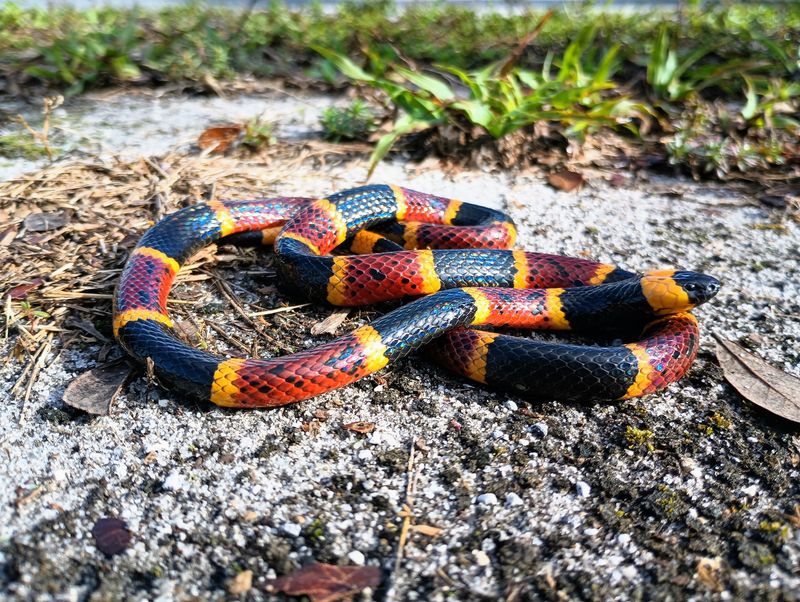
Nature’s warning system at its finest! The coral snake’s vibrant red, yellow, and black bands signal extreme danger to potential predators. Remember the rhyme: “Red touches yellow, kills a fellow.”
Unlike pit vipers that strike and release, coral snakes must chew to deliver venom through their short, fixed fangs, making bites rare but extremely serious.
8. King Cobra Can Grow Over 18 Feet Long And Has A Venomous Bite That Can Kill An Elephant

The world’s longest venomous snake isn’t native to America but is kept in zoos and by some private collectors. When threatened, king cobras raise their bodies and expand their distinctive hoods.
A single bite delivers enough neurotoxin to kill 20 people or an elephant. Their intelligence sets them apart – they recognize individual keepers and remember threats.
9. Arizona Coral Snake’s Small Size Doesn’t Stop It From Having One Of The Deadliest Bites

Barely reaching 2 feet in length, this diminutive desert dweller packs venom more potent than its eastern cousin. Their neurotoxin attacks the nervous system, potentially causing respiratory failure.
Nocturnal and secretive, these snakes spend most of their lives underground, emerging mainly at night to hunt lizards and smaller snakes, making human encounters thankfully rare.
10. Gaboon Viper Has The Longest Fangs Of Any Snake And A Venom That Can Kill Quickly
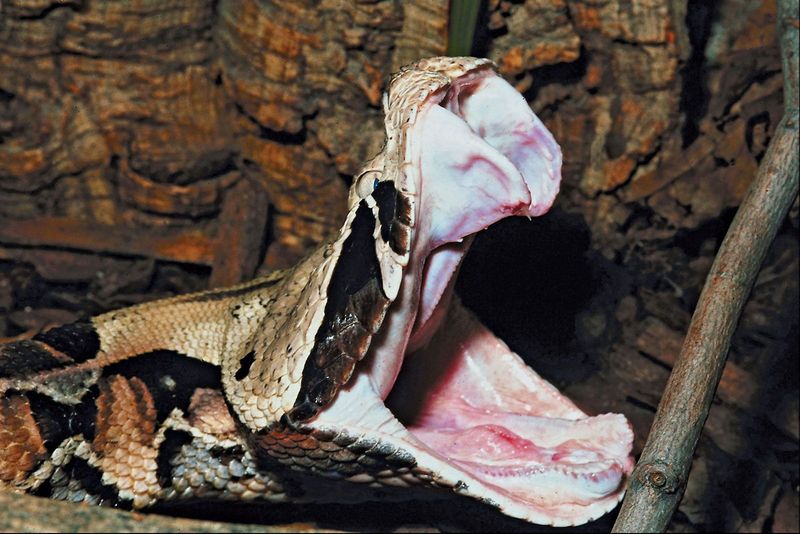
Sporting 2-inch fangs that fold against the roof of its mouth when not in use, this African ambush predator delivers more venom per bite than any other snake. Their camouflage resembles dead leaves on the forest floor.
Though not native to America, they’re kept in research facilities and zoos, where handlers exercise extreme caution around these living syringes.
11. Eastern Brown Snake Is One Of The Most Venomous Snakes And Known For Its Aggressive Nature
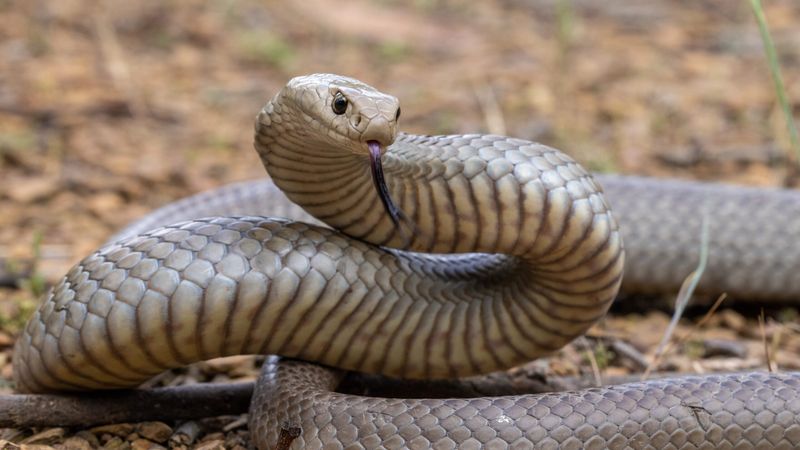
Australia’s second most venomous land snake has been introduced to some remote parts of the Americas. Their venom causes progressive paralysis and prevents blood from clotting.
When threatened, they raise their bodies in an S-shape, flattening their necks before striking repeatedly. Their speed and aggression make them particularly dangerous when cornered.
12. Pygmy Rattlesnake Is Small But Packs A Powerful Venomous Punch
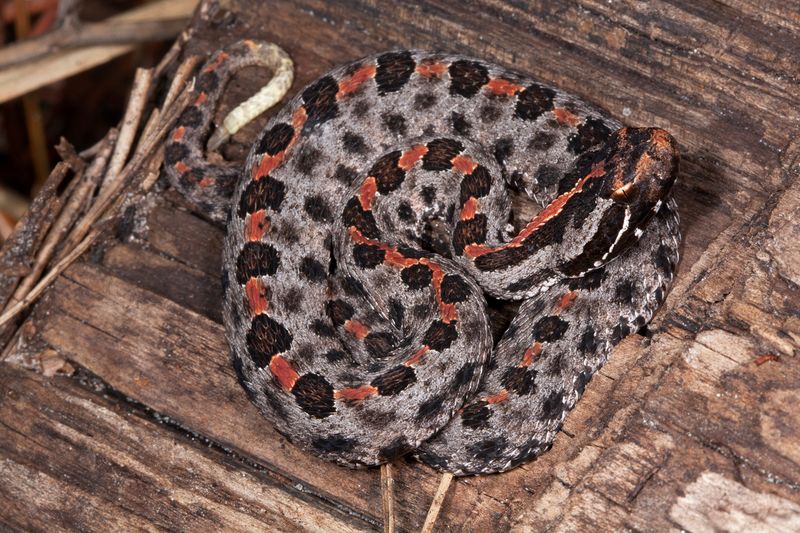
Don’t let their tiny size fool you! Rarely exceeding 2 feet in length, these miniature rattlers compensate with highly potent hemotoxic venom that destroys tissue and prevents clotting.
Their baby-rattle sound is often too quiet for human ears until you’re dangerously close. Common throughout southeastern states, they’re responsible for many bites to curious children.
13. Sidewinder Rattlesnake’s Unique Sidewinding Motion Helps It Glide Across Hot Desert Sands

Famous for their J-shaped sideways locomotion, these desert specialists leave distinctive tracks in sand dunes. The sidewinding technique minimizes contact with scorching sand while conserving energy and water.
Their specialized scales and horns above the eyes prevent sand from entering as they bury themselves to ambush prey or escape daytime heat.
14. Brown Tree Snake’s Venom Has Devastated Local Wildlife In Guam And Is Dangerous To Humans
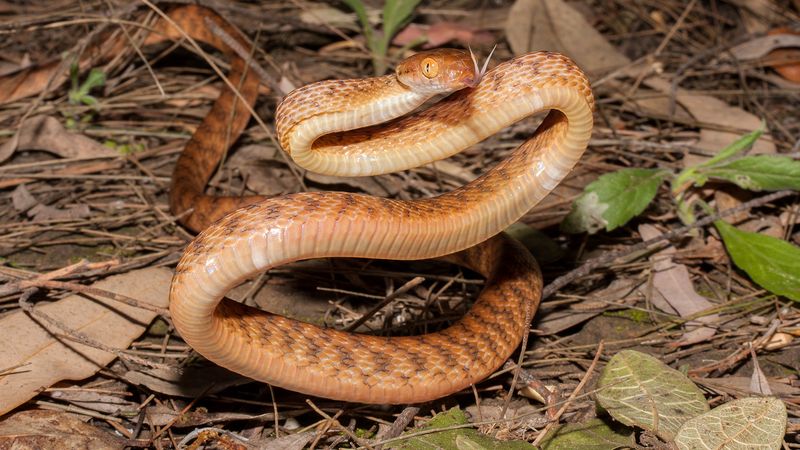
Accidentally introduced to Guam after World War II, these invasive predators have caused the extinction of 10 native bird species. They’re now threatening to spread to Hawaii and other Pacific islands.
Though rarely fatal to adults, their venom can seriously harm children. They’re exceptional climbers, capable of ascending telephone poles and entering homes through tiny openings.



